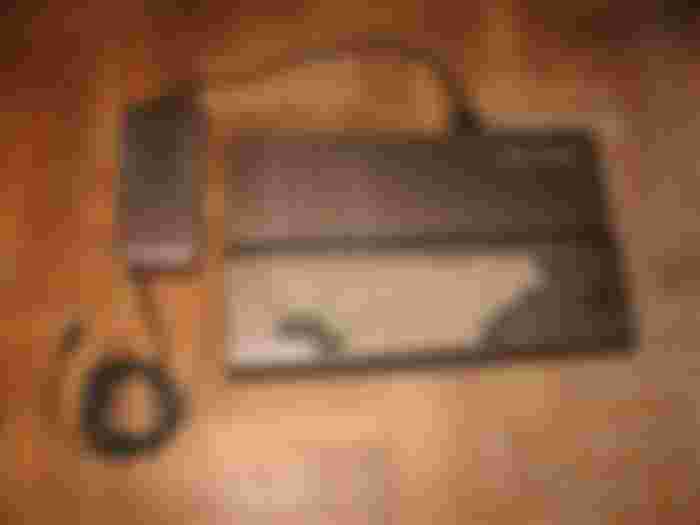After the soviets occupied East Europe, the region was the colony of the Soviet Union. Under the years of oppression, everyone who was against the system, were either killed by the secret police, or was outcasted from the society. After the communism ended, general poverty took place, region was similar to today's North Korea. The IT industry was not able to develop under this circumstances. This article will focus on Hungary, as it will focus on the era after the communism, therefore the information of this article cannot be generalized to other East European countries.

The computerization of the 80s
In the west, every kid was playing on a computer in the 80's. In Hungary, only the richest communist elite was able to afford a computer. The state decided to start manufacturing computers on its own. The few available computers by then was Z80 based computers or its clones from the western world. There was barely any usable program for them. Only bigger universities had computers back then, and only one or two. This allowed to train IT professionals, and the luckiest professors was able to learn the basics of computers, and programming. The strategy crystallized in the head of the leaders: computer manufacturing must be organized. There was however no people with knowledge, and no factories. This meant that all the computer development were based on reverse engineering.
The COCOM list
USA and the capitalistic powers had an embargo for exporting computer chips to communist countries. Even if someone somehow had enough money to buy a western computer, he had to do it illegally, and smugger it through the borders. This forced the communist powers to manufacture their computers on their own. Till the early 80's, only Russia had the capacity to create microchips, so the earliest computers for corporations and education institutes were originating from Russia.
The soviet computers
In the Soviet Union, they have started cloning the Z80 based Spectrum computers. They have cloned other architectures as well, but the Z80 based computers were the only popular ones. The soviets cloned the Intel 8080 CPU as well, but they have used those chips in industrial apparatus, such as in oscilloscopes, and in embedded devices. Then they have cloned the Z80 CPU. The Z80 CPU was also very popular in the west, and had only a few 1000s of logical gates. Memory chips were also relatively simple to be made. The rest of the components was easyer to manufacture, such as the motherboard, and the keyboard, so these computers look quite differently from the original Z80 based computers.
Hungary decides to make CPUs
The Hungarian leadership decided to pull up a CPU manufacturing plant, using the equipment of Tungsram and MEV. There was just one problem: there were no researchers. There was a few engineers who were researching CPUs, but they were more like the modern fake unix scriptkiddies who citating 30 year old Unix commands around a campfire than actually researchers. When the leaders asked them to help building the CPU manufacturing plant, they have declined the offer. But this wasn't an offer, this was a command. The secret police immediately forced these engineers to start working on cloning the 8080 CPU from Intel, and they were told that they have three years to succeed. The chance of getting life imprisonment in a forced labor camp indeed allows people to make real scientific results, so they was able to reverse engineer the 8080 processor from layer to layer. The manufacturing started in 1985 and the chip yield per wafers was merely about 15% due to the lack of a proper clean-air manufacturing.
End of the Hungarian CPU manufacturing
After the job of the engineers were ended, they was fired from the CPU manufacturing corporations for their earlier disobedience. The engineers escaped the country. The main engineer frozen almost to death in a refugee camp in Austria in a tent, as he was waiting his asylum to be granted. Later on he died in the hospital, he leaved three orphans. Another lead engineer was replaced at the company as well, as the manufacturing was took over by the real communists, who didn't even understood what a transistor is. He died short afterwards as well. After just manufacturing about 3500 pieces of the processor, there was a fire in the factory, which destroyed the CPU manufacturing corporation. First they were thinking on sabotage, and thought that the USA or Israel planted a bomb in the factory to destroy it. Some people accused the Soviet Union, who was seen a threat in the Hungarian self-grown CPU industry. All of these theories were conspiracy theories, as the Hungarian factory was too insignificant. It turned out that they have disconnected the automatic fire detector system in the factory, because it randomly turned on sometimes, which meant that a small fire was able to ignite very quickly between the chemicals used to make the layers for the transistors in the chips. The total loss of the project was approximately one billion USD, which translates to about 10 Billion USD in today's prices, meaning that a significant portion of the Hungarian GDP was lost. This means that one piece of 8080 processors were made from more money than an actual MIG-21 aircraft. The accident devastated the industry, and chip manufacturing was canceled in Hungary.
Computers for schools
After the CPU manufacturing ended, the government decided to use foreigner chips, and focus on computer manufacturing instead. The Hungarian secret service hijacked trucks from Austria, with cargo containing a total of about 50000 Z80 chips and even more memory chips. The government wrote out a tender for building cheap computers for schools and factories. Multiple corporations had to compete, the winner design was the Videoton TV Computer.

picture: wikipedia
The Videoton TVC was a clone of a japanese machine, which was a clone of an American machine, and it used Z80 with 32k or 64k RAM. The computer was released after 1986, and was consumed approx 200 Watts. The computer run very hot, after multiple hours of usage, the plastic melted and deformed. Despite this, the computers were doing they job well. The operating system was a BASIC variant, which was also able to handle loading programs from tape, and 5.25 floppy disks (if you bought the separate disk drives for the computer). About 12000 pieces were manufactured from the computer. The problem was, that the price of the computer was approx 12 000 HUF, which was too high for mass adoption. Regular people were not able to buy it, as the monthly vague of a worker was about 1000 HUF, and a teacher earned about 2000 HUF per month.
Barely any programs were made for this system, a total 50 games were produced. Floppies were uncommon, so people had to hook the computer up to tape players to get new programs. The radio stations sometimes aired video games and other programs, so people was able to record them to tapes and load the programs up to their computers. Some simple programs and simple games were released in books, and people had to type them in every time to use them.
The end of the 80's
TVC was not the only computer in Hungary, in the late 80s other computers were appeared on the market as well. Such as cheap soviet z80 based clone computers, and smugglered Commodore machines from the west. There was Hungarian home-brew computers as well, and some was manufactured in the first private corporations which people were able to form, as the communism is slowly phased out. Communism finally died, and barely anything left after it. Poverty intensified as the state owned manufacturers discontinued the operation. Luckily, Hungary was always more free than the rest of the soviet block. The state was never able to force the lowest layers of the economy below the planned economy, unlike in less lucky states, where the communism was more totalitarian - especially after the revolution of 1956, they was afraid to build socialism further. This meant two thing, one of them was the people had capitalistic instincts, and a lot of them started business around computers, such as copying flopyp disks, printing documents, or even making games on their own.
The Commodore era
The COCOM list was lifted, and now it was possible to import western computers in large numbers. The state have ordered a few Commodore machines for the schools, and stores started to buy second-hand Commodore computers from the west as well. In the west, they already started to phase out this 8 bit computer era, which was very lucky for Hungary, as the country was basically able to buy up all the used Commodore computers. Commodore 64 was the most popular choice, but the Commodore 16, Commodore C116, Commodore Plus 4 was also available. In my circles, Commodore 128D was the most popular Commodore computer, and most of my friends had that model instead. Finally, kids were also able to access these Commodore computers, and they have mostly used it for gaming. Commodore 128 and Commodore 128D is backwards compatible with the Commodore64, and it can run the programs designed for the Commodore128D. A friend of me had Commodore 128D as well, and i sometimes visited him. Kids usually had multiple hundreds of floppy disks, with full of games. A notable example is Barbarians, this is the first game i remember to play on a computer.
Other game consoles
As kids mostly used the Commodore computers as video game consoles, russian game console clones also flooded the market. Such as clones of the early Atari console, simply referred as The black TV games. Another popular game console was the Dendy Junior, a Russian made NES clone manufactured by a russian corporation called Steeplers. Russians, instead of cloning the NES from chip by chip, they reverse engineered it, and wrote an emulator for a Micro-controller unit to emulate the system.

(Picture from Wikipedia)
This made the Dendy Junior a very cheap and well designed Nintendo clone. It was simply referred as Nintendo. The chips were manufactured in Taiwan. Japan and the real Nintendo was not able to do anything against it. Later on, they officially agreed to allow Dendy to produce NES clones for a minimal fee, this basically made the Dendy Junior the official Nintendo of East Europe. Kids enjoyed using these for a few years, but the systems got quickly obsolete.
Software industry splits into two
As we slowly reaching the point of 1995, we can see that the Hungarian market and the western computer market is totally diverged from each other. Game and computer magazines were trying to cover all of the platforms of the era. The west already uses 486 and even early Pentium 1 machines with Windows, Hungary still used Commodore. There was two software industry existing parallel. One was producing software and games for the internal Hungarian market, and the another one was producing games and software for export.

source: hungame
A kastély: posted of a Hungarian game for Commodore64 from 1993.
game: Időrégész, another Hungarian adventure game
Hungarian games were mostly produced for the internal market, and most of them were adventure games, or logic games. Some of the bigger studios which were formed around this era, started working on games to export, but they needed a few more years to earn their first successes.
Transition to x86
Commodore bankrupted, and it was obvious that the country has to switch from the 8 bit computers to 16 bit. The economy started to stabilize, and people were agile enough to start importing early 16 bit computers from west europe. They have bought up the decommissioned XT and 8086/8086 computers from west europe, and they have also collected them from western landfills, and restored them to a working state. These computers typically had 5.25 inch drives, which made it possible to use the old floppies for the Commodore machines inside them, after formatting them. Hard disk drives in these machines was typically 20 MByte, and memory was 512k or 768k. The younger kids got the Commodore machines from their parents and older brothers, and older ones went for the new PC era. Such XT-like computers were available for 5000 HUF in 1995. Then, monthly salary was about 10000 HUF, so families were able to buy such a computer without any issue.
Problems with x86
x86 was already the most popular platform in the west, however, the Hungarian game industry was still focused on the Commodore64, and transition to the "new" architecture take a lot of time. The XT-ish era computers usually had black and white screens and limited graphics and audio availability, such as only using the PC beeper to make sound. These early x86 computers were very disappointing after the Commodore era.

A Hungarian game for the PC, called Észkerék (Mindwheel)
The Hungarian industry was still split in two. One of the fraction, which were producing games and programs for the Commodore64, started to produce games for the first x86 PC machines, such as the above one. The rest continued to produce programs and games for export purposes, for the more modern 32 bit computers.
Socioeconomic changes in the late 90s
In the late 90s, the country resembled more like a civilized place, and looked less like North Korea. People was able to afford eating normal food. The country developed more within a decade of capitalism, than under the previous 4 decades of communism altogether. Fridges were full of food, people was free and happy. The software and game industry also switched to new speeds. This was the era that accelerated Hungary into the top of the programming industry. Some foreigner corporations also made factories here, and using the engineers of the country, they have started producing CD burners, hard disks, and other type hardware.
Finally, 32 bit
After 1997 and 1998, people were finally able to buy 386 and 486 based computers. Most of these computers were having used parts from west Europe, and was built by local shops. A typical 386 and 486 of the era had horizontal case, a 3.5 inch floppy drive, they had a hard disk sized about 80 to 400 MByte, a color monitor and video cards capable of doing 640x480 in at least 16 bits of color. The people also added CD rom drives later on, as this also became available for very cheap. After a RAM upgrade, they was able to install Windows 95 and they have arrived in the new, modern era of computing.
The best games
The Hungarian game industry was still split in two, but the scissor started to close, as now both the games for export, and both the games for the internal market were running basically on the same computers. One quite nice examples of games for the Hungarian market is the Terep2, which is an offroad car simulator with complex physics, one of the first offroad and open world games of the kind, which was extremely popular in Hungary, and almost everyone had it on their computers. The game also have multiplayer mode, and a few dozens of tracks. It runs well on a 486 and above.
Video: Terep2
Another good example is the Elastomania, which is a Hungarian motorcross simulator. It was a shareware game, so the opensource community cloned the game later on with the name x-moto for Linux.
Video: Elastomania
The game developers of the country also developed AAA video games on their own. Notable examples are Eccho of the Dolphin, and Imperium Galactica 2. Dozens of similar AAA games were made for export purposes by larger developer studios, and they are relatively unknown inside Hungary - meanwhile the games produced for the internal Hungarian market are totally unknown for outsiders.
A funny story, that once a Russian friend of me PM-ed me about one of these Hungarian AAA PC games, and i didn't even knew the game. Then he got angry, and told me that i should know about this game, because its part of my culture (especially as a game developer). This is probably what Japanese people feel, when you start to talk them about Anime.

To sum up
East Europe has a good 5-10 year lag compared to the West, when its about Hardware and computers. This nowadays means absolutely nothing, as there is barely any difference between a 10 year old computer and a modern computer. The technologies died out in the west long ago, was kept alive in the east for another decade. This also means that the precious retro hardware you wish to buy since years, is probably is stored in someones basement in East Europe, if you are lucky. If you are not lucky, its still in use. Pentium1/Socket7 based builds were used till 2004, and PGA370 based Celeron/Pentium3 builds were used here till 2010, altough in the last decade everyone migrated into 64 bit PC-s, and nowadays, Android became the most popular choice by normies.






An excellent historical read about how computer equipment developed in Hungary.
It corresponds well with what my sister said about Hungary during her visits for a multinational electronics manufacturer, earlier this century.